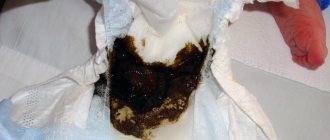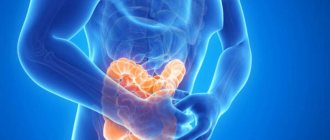Vomiting in a child after eating is an alarming symptom that frightens and worries parents. When studying the condition, physiological and pathological triggers are noted. If a gag reflex occurs, you must seek help from a doctor to eliminate the symptoms, treat the main provoking factor, and stabilize the water and electrolyte balance in the body.
Causes of vomiting in a child after eating
Reasons that provoke the development of urges after eating:
- In infants, after feeding with breast milk, it may occur when the volume is excessive, typical for children who are bottle-fed. Milk has a liquid consistency and is in an undigested state.
- When overeating in older age, vomiting without fever after eating is characterized by a single manifestation. After the stomach has emptied, relief comes. In the masses you can find undigested pieces of foods taken previously.
- When teething in the period up to 1.5-2 years, it can be observed after eating. It is caused by increased salivation; when feeding, the baby swallows viscous saliva, irritates the gastrointestinal mucosa, and a vomiting reaction occurs. Characterized by the addition of loose stools and elevated temperature.
- When eating heavy fatty foods, the pancreatic enzymatic system cannot cope with the load after eating. Within a few hours, nausea, pain in the epigastric region, diarrhea with the appearance of discolored feces and drops of fat may appear.
- When introducing new food products into the diet of an infant or older children, as a manifestation of individual intolerance and allergy to a new food component.
- Poor quality products with bacteria provoke the development of diseases of the digestive tract (infection with rotavirus, intestinal flu, poisoning, toxic infections, salmonellosis, botulinum toxin).
- It can be caused by stress when parents force them to eat, scold them for poor appetite, or try to feed them something the child doesn’t like.
- The infectious agent is in the water in which food is prepared - contamination by wastewater from the general water supply system, lack of filtration or boiling of water.
- If you violate the therapeutic diet (diet tables) with the consumption of large amounts of sweet or starchy foods, the body cannot cope with the load.
- As an acclimatization reaction when changing place of residence, especially when moving to warm countries where exotic types of fruits are common, unusual food for a child. Vomiting is observed as a defensive reaction.
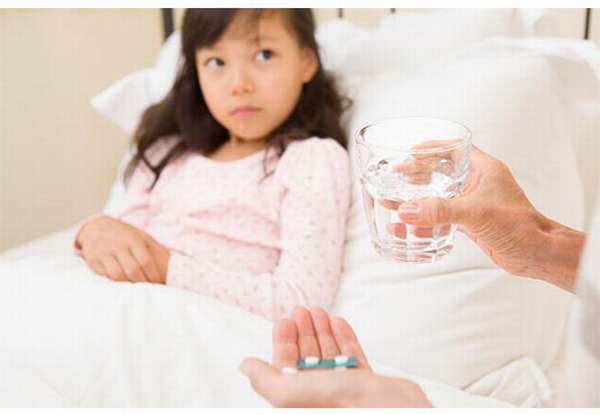
What complications can occur with repeated and severe vomiting?
- Dehydration. A sudden loss of fluid disrupts the water-salt balance in the body, and this leads to serious consequences - disruptions in the functioning of all vital organs. With extremely severe degrees of dehydration, convulsions and loss of consciousness are observed. This condition is especially dangerous for infants.
- Weight loss. Dangerous for infants, premature and low birth weight babies. In such babies, critical weight loss can occur within 24 hours.
- Bleeding. With persistent vomiting, the mucous membrane of the stomach and esophagus is injured, blood vessels burst, and as a result, blood may appear in the vomit.
- Danger of suffocation from vomit entering the respiratory tract. The greatest risk is in infants and unconscious children.
- Aspiration pneumonia. Occurs when vomit enters the lungs. Gastric juice is dangerous for lung tissue. Inpatient treatment is required: suction of mucus from the trachea, antibacterial therapy, and, if necessary, artificial ventilation.
You cannot hesitate and self-medicate in such situations.
Vomiting in a child without fever can be a one-time reflex reaction to some irritant: the baby choked, coughed heavily, or ate something tasteless. This is due to the increased gag reflex in children. However, repeated, profuse vomiting, not associated with intestinal infections, can signal a number of serious diseases. In this case, you should definitely consult a doctor.
source: kids365.ru
All mothers and fathers know very well that vomiting in children is not such a rare occurrence. However, in practice, when faced with an attack, many are simply lost and do not know how to provide first aid to the baby, what to do and where to call. Authoritative children's doctor Evgeny Komarovsky, author of numerous articles and books on children's health, explains why vomiting happens and what adults should do about it.
About vomiting
Vomiting is a protective mechanism, a reflexive eruption of stomach contents through the mouth (or nose). During an attack, the abdominal press contracts, the esophagus expands, the stomach itself relaxes and pushes everything that is in it up the esophagus. This rather complex process regulates the vomiting center, which in all people is located in the medulla oblongata. Most often, vomit is a mixture of undigested food debris and gastric juice. Sometimes they may contain impurities of pus or blood, bile.
The most common cause of childhood vomiting is food poisoning. Vomiting can be observed with various infectious diseases: rotavirus infection, scarlet fever, typhus.
Less commonly, this problem is caused by accumulated toxins; this condition can occur with serious kidney disease.
Other causes of vomiting include diseases of the stomach and intestines, neurological diagnoses, and head injuries.
In children, vomiting can often be provoked by severe emotional shocks.
Kinds
Doctors distinguish several types of infant vomiting:
- Cyclic vomiting (acetonemic).
- Renal.
- Hepatogenic.
- Diabetic.
- Cardiac.
- Psychogenic.
- Cerebral.
- Bloody.
In most cases, vomiting in children begins at night. The baby wakes up from severe nausea. In this situation, it is important not to be scared or confused. Parents' actions should be calm and confident.
The younger the child, the more dangerous vomiting is for him, since dehydration can occur, which can be fatal for children.
A single vomiting (without any additional symptoms) in a child should not cause much concern for parents, says Evgeny Komarovsky. The fact is that this is how the body “cleanses” itself of accumulated toxins and food elements that the child could not digest. However, parental inaction can be fraught with tragic consequences in cases where vomiting is repeated, as well as if there are other symptoms indicating disorders in the body.
The most common cause of vomiting in children is food poisoning. Poison can enter a baby’s body through various foods: dairy, meat, seafood, vegetables and fruits.
In the vast majority of cases, the gag reflex is caused by nitrates and pesticides used on fruits and vegetables. Even very high-quality meat products can cause severe poisoning if they are prepared incorrectly.
Evgeny Komarovsky emphasizes that the first symptoms of food poisoning usually begin to appear between 4 and 48 hours after eating. Quite often, you can stop vomiting caused by food on your own, at home. However, Evgeny Komarovsky reminds that there are situations in which mothers and fathers should not engage in independent healing. Medical attention is required:
- Children from 0 to 3 years old.
- Children who vomit due to elevated body temperature.
- Children who have vomiting, diarrhea and abdominal pain (all or just some of the symptoms) have lasted for more than two days.
- Children who are not “alone” in their illness (if other household members have similar symptoms
There are situations in which a child needs emergency medical attention as soon as possible. You should call an ambulance in one or more of the following conditions:
- Vomiting occurred after eating mushrooms.
- The vomiting is so intense that the baby cannot drink water.
- Vomiting is accompanied by clouding of consciousness, incoherent speech, poor coordination of movements, yellowing of the skin, dry mucous membranes, and the appearance of a rash.
- Vomiting is accompanied by visual enlargement (swelling) of the joints.
- Against the background of repeated vomiting, there is no urination for more than 6 hours, the urine has a dark tint.
- Vomit and (or) feces contain impurities of blood and pus.
While waiting for the doctor to arrive, the child should be placed on his side so that during the next vomiting attack the child does not choke on the vomit. The baby should be held in your arms, on its side. There is no need to give any medications.
In order for the doctor to quickly understand the true cause of the child’s condition, parents must remember in as much detail as possible what the baby ate over the last 24 hours, what he drank, where he was and what he did. In addition, mom and dad will have to carefully examine the vomit in order to then tell the doctor about its color, consistency, whether there is an unusual smell, whether there are any impurities of blood or pus in it.
Analyzing color
Dark vomit (the color of coffee grounds) may indicate serious stomach problems, including peptic ulcers.
If there is an admixture of bile in the masses and there is a bitter-sweet smell, one may suspect a problem with the gallbladder and biliary tract.
The green color of the vomit may indicate the neurological nature of the reflex; vomiting also occurs in a severe stressful situation, when the child cannot cope with anxiety and emotions in any other way.
It is recommended to leave samples of vomit and feces of a sick child until the doctor arrives in order to show them to a specialist. This will facilitate the fastest and most accurate diagnosis of the true cause of the condition.
Vomiting in an infant may be a completely natural process of developing digestive functions, but it is better if it is diagnosed by a doctor. Komarovsky emphasizes that vomiting in infants is often a completely expected cause of banal overeating if parents are too zealous in their desire to feed their child more and more calories.
Vomiting can also be of another nature - allergic, traumatic, and also inflammatory. In other words, this reflex accompanies a great variety of different diseases, some of which require prompt hospitalization followed by surgical care, and therefore vomiting attacks should not be underestimated.
So, parents should make every effort not to stop vomiting at any cost and try to treat something with folk remedies, but to carefully observe. It will be just great if they can provide the following information to the doctor who comes to the call:
- Frequency and periodicity of attacks (at what intervals does vomiting occur, how long does it last).
- Does the child feel better after the next attack, does the abdominal pain decrease?
- What is the approximate volume of vomit, its color and whether there are any impurities.
- What has the baby been sick with over the past year, over the past two weeks?
- What did the baby eat, and do the parents suspect food poisoning?
- Has the child's weight changed over the past 2 weeks?
Adviсe
If a child has some of the above symptoms, but is not vomiting, Komarovsky advises inducing the reflex on his own. To do this, you need to give the baby 2-3 glasses of warm water or milk to drink, and then gently insert your fingers into the oropharynx and move them slightly. You can lightly press the root of your tongue with your fingers or a spoon.
There is no need to feed the child anything. However, drinking is a must. At the same time, you should know that drinking water from a child who is vomiting is a whole science; it must be carried out strictly according to the rules. Firstly, says Evgeny Komarovsky, drinks should be small, but very frequent. A single dose is a few sips. Secondly, the temperature of the water should be similar to body temperature, so the liquid will be absorbed more quickly, which will protect the child from dehydration. When asked what to drink, the doctor answers that the best option is oral rehydration solutions or homemade saline solutions. If desired, you can give your child still mineral water, tea, compote.
Under no circumstances should you add sugar, jam, or honey to your drink. If the child flatly refuses to drink what he is supposed to, offer him what he likes - juice or a sweet drink, but dilute it with water so that the resulting drink is as clear as possible.
It is useful to give activated carbon, but only in strictly designated proportions - 1 gram of the drug per kilogram of the child’s weight, no less. If the temperature has risen, you can give your baby an antipyretic, Paracetamol is best.
You should not transport your child to a medical facility yourself. In the car, the baby may be “shaken” even more, and the attacks will intensify. Komarovsky warns parents to give alcohol solutions and potassium permanganate when vomiting.
Drugs approved for children are Smecta, Regidron, Enterofuril.
Komarovsky calls on parents to be prudent and not to give their children remedies for vomiting that are often recommended by “experts” in traditional medicine (for example, a milk-yolk mixture), since such “treatment” can only worsen the child’s condition.
Feeding after vomiting should be done gradually, without overloading the stomach - in small portions, avoiding fatty, sweet, salty and sour foods.
Dr. Komarovsky will tell you what to do if a child is vomiting in the video below.
source: www.o-krohe.ru
What diseases can be caused
Repeated vomiting after each meal of any food in a child is provoked by concomitant diseases, congenital pathology of the gastrointestinal system. Regardless of the severity of the manifestations, the duration of clinical symptoms, or age, treatment is necessary with a medicinal effect on the underlying disease; there is a danger to health and life with the rapid development of dehydration and the risk of death.
| A disease that provokes the symptom of vomiting | Clinical picture | Treatment tactics |
| Intestinal infection, gastritis, gastroduodenitis, poisoning | Repeated urge, which is accompanied by a rise in body temperature, diarrhea, pain in the abdomen | Drink a lot to remove toxins, prevent dehydration, using the fractional drinking method |
| Food allergies | After eating a certain product, urticaria due to an immunological reaction to food, moodiness | Avoid allergenic foods and drink a lot |
| Pyloric stenosis | Observed in newborns immediately after feeding, loss of body weight to a critical condition | Urgent visit to a surgical hospital, treated with surgery |
| Pylorospasm | Periodic vomiting due to impaired muscle regulation | The doctor adjusts the diet and, if necessary, prescribes antispasmodics |
| Brain lesions (meningitis, trauma, encephalitis, compression of brain tissue by a tumor) | Does not bring relief, neurological symptoms and characteristic disturbances of consciousness are observed | Comprehensive treatment by a pediatrician, neurologist, and pediatric infectious disease specialist |
| Seasickness | Symptoms appear when motion sickness occurs at sea, on a train, in a car with a weak vestibular system | Taking medications for motion sickness that are prescribed by your doctor |
| Acetonemia | With an increase in the content of ketone bodies in the blood and urine, characteristic symptoms are observed, which is caused by a violation of the diet, diabetes mellitus | Carrying out an acetone test, seeking help from a pediatrician |
| Infectious diseases of the respiratory tract | Inflammatory reaction of the larynx, pharynx, oral cavity with pain, cough reflex can provoke nausea due to irritation of the cough center in the brain | Therapy of the underlying disease |
| Acute appendicitis | Accompanied by pain, weakness, convulsions, low-grade fever in a child | Contacting the surgical department of the hospital |
| Parasitic lesions | With helminthic infestation, migration of parasites after eating, short periodic urge to vomit may occur | Carry out a thorough diagnosis of the body, treatment for worms |
Basic treatment methods
Regardless of the cause of vomiting, it is important to first identify and eliminate the factors. Of course, parents should not panic at the sight of vomiting, because wrong actions can only scare the child.
The main thing at the initial stage is to prevent dehydration of the body. You can give children a saline solution to drink (1 teaspoon of salt and sugar per 1 liter of warm water) or dilute potassium permanganate (a weak solution) and give them to drink in small sips.
If the cause is an intestinal or rotavirus infection, then therapeutic therapy is prescribed exclusively by a doctor. If there is chemical poisoning, then it is important to take measures to cleanse the stomach of accumulated contents. To help - Enterosgel.
When treating pyloric spasm, the basis is anti-reflux mixtures included in the diet, even if the baby is breastfed.
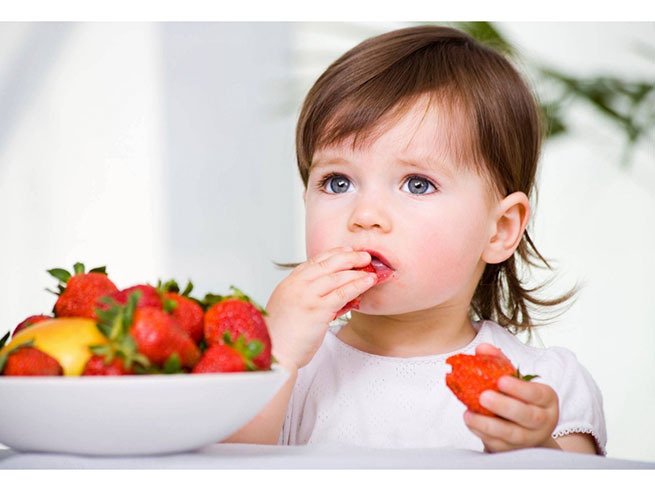
If there is a suspicion of ingestion of a foreign object (which is not uncommon in babies who have a habit of putting everything in their mouth), home remedies are unlikely to be useful. To quickly remove a foreign object from the esophagus, you need to urgently contact a surgeon.
Features of vomiting in a child
The difference between vomiting after eating in childhood is the absence of warning signs; the child may begin to vomit at rest. Children are more prone to rapid dehydration with loss of electrolytes, which poses a danger to the baby's life.
The state of dehydration may become more complicated in the presence of hyperthermia against the background of clinical symptoms.
No temperature
It occurs against the background of eating disorders, overeating, absorption at too fast a pace (stretching the walls of the stomach provokes vomiting). The way out of the situation is to normalize food intake and instill the right habits.
1-2 hours after eating
Vomiting in a child after several hours of eating may indicate poisoning, exacerbation of chronic pathology (gastritis, ulcerative processes) and as a reaction to new foods.
Immediately after each meal
If every time a child eats, characteristic symptoms appear, it is recommended to consult a specialist doctor; this is an alarming sign of the presence of concomitant pathology in the body, diseases of internal organs that require drug correction.
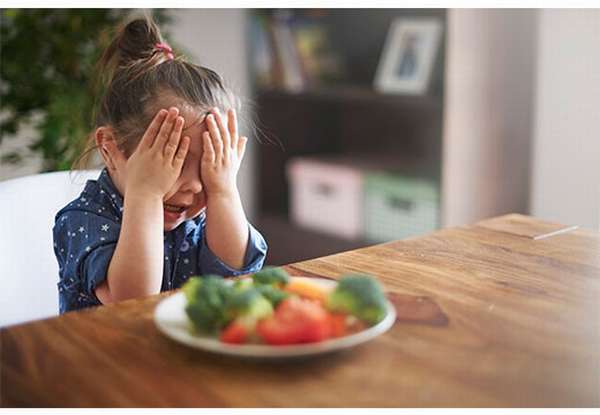
What information is missing from the article?
- Methods for eliminating vomiting in children
- Doctors' opinion
- Medicine Reviews
- Traditional recipes for vomiting
Restoring digestion immediately after vomiting
Vomiting is a warning sign!
This unpleasant phenomenon is accompanied by side effects such as disruption of water-salt balance and loss of large amounts of fluid by the body. Before feeding the child, it is necessary to restore this balance, if medical tactics do not provide for other measures. Until these indicators are brought back to normal, feeding may be inappropriate and even harmful to children's health.
It is recommended to replenish lost fluid and additionally take medications containing salt, soda, calcium, and glucose to replenish lost nutrients. These may be medications such as Regidron, Glucosolan, Oralit. Water-salt solutions prepared from them give 1-2 tsp. for babies, older children – 1-2 tbsp. spoons at a time. Required volume:
- Children under one year old – 150-200 ml per kg of weight per day.
- For children over one year old – 120-170 ml per kg of weight.
It is better to drink sweet tea, rosehip infusion, still mineral water, rice water, dried fruit compote. If the child does not show appetite, you can get by with these measures for the next 5-6 hours.
Methods and means of treating vomiting
According to the recommendations of Dr. Komarovsky E.O. It is necessary to take first aid measures for the child (drink in small portions, do not feed during the acute period), call a doctor.
It is not permissible to independently treat vomiting for an unknown reason after eating; the risk of developing severe dehydration is high.
Principles of therapy:
- prescribing sorbent drugs in age-related doses (Enterosgel, Smecta, Atoxil, White Coal) to eliminate inflammatory processes, eliminate pathogens,
- the use of rehydrants to restore water and electrolyte balance (Regidron, Gidrosec, Oralit, Humana-electrolyte),
- therapy of the underlying disease: surgery for acute appendicitis and pyloric stenosis, treatment of acute respiratory infections, rehabilitation of chronic foci of infection, use of anthelmintic drugs in the presence of signs of parasitic infestation (Vormil, Pirantel), antihistamines to stabilize immune reactions, reduce symptoms of nausea (Loratadine, Alerzin, Fenistil).
The choice of treatment regimen for the child and diet is selected by the doctor individually, based on a diagnostic study.
A child vomits after eating and feels sick: causes, first aid and treatment features
Vomiting is a reflex of the body in which the contents of the stomach are expelled.
In some cases, it serves as a protective mechanism, preventing the absorption of harmful and toxic substances - from this point of view, vomiting should be perceived as a positive phenomenon.
However, it is often a symptom of various ailments, therefore, when the baby feels sick and vomits after eating, parents should carefully consider his condition and, if necessary, go to the hospital.
Why might a child vomit after or while eating?
The child vomited while eating or immediately after eating - what is the reason for this reaction? Factors that cause the gag reflex can be divided into two groups: pathological, which are caused by gastrointestinal ailments or other diseases, and non-pathological, associated with the circumstances of eating.
Causes not related to pathological processes in the body
If your baby vomits while eating or immediately after eating, do not panic. Vomiting can be caused by external factors rather than illness. The most common reasons why a child vomits while eating:
- Binge eating. Many parents worry about making sure their children eat well. Breasts cannot always regulate the moment of satiety, and young mothers often do not understand how much a newborn needs to eat. When overeating, the baby's stomach is not able to cope with the amount of food, so undigested residues are released out.
- Force feeding. “Until you eat everything, you won’t leave the table.” Many people heard this phrase in childhood. This position of parents is fundamentally wrong. False stereotypes provoke a gag reflex during eating and contribute to the development of eating disorders (anorexia, bulimia) in the future.
- Tasteless food. Small children do not like certain foods: onions, cabbage, semolina. The taste or smell alone can trigger a gag reflex.
- Abundance of fatty foods. When eating fatty, heavy foods, even an adult can feel nauseous. The child's body reacts even more strongly to such products.
Diseases of internal organs and systems
Diseases that cause the gag reflex can be acquired or congenital. What diseases does vomiting after eating in a child indicate?
Acquired ailments that cause vomiting:
| No. | Name | Reason for appearance |
| 1 | Food poisoning | Intoxication with microbial or non-bacterial toxins due to consumption of stale food or poisonous products. |
| 2 | Acute appendicitis | Inflammatory-necrotic lesion of the appendix. There are several theories why inflammation begins: viral, bacterial or parasitic infections, endocrine pathologies, systemic vasculitis. |
| 3 | Gastrointestinal diseases: gastritis, ulcers, pancreatitis. | Illnesses are provoked by eating heavy, fatty, fried, salty foods. Gastritis and ulcers may have a bacteriological origin. |
| 4 | Neuroses and stress conditions | Vomiting under severe stress, emotional overstrain, panic attack, overwork. |
Congenital pathologies that provoke vomiting:
| No. | Name | Description |
| 1 | Pyloric stenosis | A narrowing of the passage between the stomach and duodenum, which prevents food from passing through the gastrointestinal tract. It appears in the first 3 months of a child’s life. |
| 2 | Pylorospasm | Spasm of the pylorus at the entrance to the duodenum. Caused by neuromuscular pathologies. Appears in infants. |
| 3 | Cardiospasm | Spasm of the esophagus at the entrance to the stomach. Caused by pathology of the vagus nerve. |
| 4 | Intestinal obstruction | A syndrome that can manifest itself in the absence of innervation of part of the intestine or in the elongation of the sigmoid colon. |
| 5 | Metabolic pathologies (celiac disease, lactose intolerance, diabetes mellitus) | Lack of necessary enzymes to break down gluten, lactose, and glucose. |
Symptoms accompanying vomiting in the presence of pathology
How can parents understand whether vomiting is associated with pathological conditions or whether the baby has simply eaten too much? When sick, vomiting may be accompanied by the following symptoms:
- increased body temperature;
- diarrhea;
- fever;
- sharp pain in the abdomen;
- clouding of consciousness.
If a child has vomited several times, this is a cause for concern. You should also pay attention to the nature of the vomit. For various ailments, depending on the severity, vomit may contain bile, intestinal contents, and blood clots. If such vomiting occurs, you should immediately go to the hospital.
First aid for a child who is vomiting
What to do if a child vomits? First aid:
- tilt the baby forward, place him on his knees so that the vomit comes out calmly and the child does not choke on it;
- hold the baby's mouth so that it remains open, otherwise the masses will go through the nose;
- Give your baby plenty of water to drink – this will help remove food debris from the stomach and cope with dehydration;
- Do not feed your baby immediately after vomiting - this may cause nausea.
If your baby has eaten too much, Smecta and drinking plenty of fluids will help him cope with nausea. After the child has vomited, he needs to be kept calm. Let him rest a little in a half-sitting position. Lying down is not recommended - this will increase nausea and, if the next attack begins, it will be more difficult for the child to bend over.
Diagnostic methods for determining the causes of gag reflexes after eating
First of all, the pediatrician asks parents about the circumstances surrounding the occurrence of vomiting:
- what the baby ate when he vomited;
- how many times he vomited;
- what the vomit looked like and whether it contained impurities;
- How often does a child vomit?
Based on the information received, the doctor can draw conclusions about the suspected illness. To make a diagnosis, the following examinations are prescribed:
- general blood analysis;
- esophagogastroduodenoscopy;
- X-ray with contrast.
During an endoscopy, an endoscopist examines the walls of the esophagus, stomach and duodenum by inserting a tube containing a fiber optic system into the patient. The image is transmitted to the computer monitor. During contrast fluoroscopy, a contrast agent is injected into the patient and then observed as it passes through the gastrointestinal tract.
If a pathology of the central nervous system or endocrine disorders is suspected, the pediatrician writes a referral to a neurologist or endocrinologist. These specialists may prescribe a biochemical blood test for hormones, an MRI or ultrasound of the brain.
Treatment tactics
Acute appendicitis is an indication for urgent surgery. The inflamed appendage is removed if surgery is not performed in time. The walls of the appendix may rupture, leading to the development of peritonitis.
Congenital pathologies are most often treated surgically. The section of intestine with pathological changes is removed.
In case of allergies or individual intolerance to the product, children are advised to follow a strict diet. If the body is unable to digest lactose or gluten, from the first days of a newborn’s life all products containing these components, including breast milk, should be excluded from his food.
Whatever the cause of vomiting, one of the therapeutic measures is to restore the amount of fluid in the body. With prolonged vomiting and diarrhea, dehydration occurs - rehydration solutions will help cope with it.
Source: https://www.deti34.ru/simptomy/jkt/rebenka-toshnit-posle-edy.html
The baby overate and vomited: how to help a child with vomiting after eating
Young parents often ask pediatricians why their child vomits after eating. There are many reasons. If vomiting after eating is more often considered a relatively safe phenomenon, sometimes it can be a sign of a dangerous disease. What causes baby vomiting and when should you worry?
Nausea in a child
Concept of gag reflex
Nausea is the feeling of imminent vomiting, and vomiting is the expulsion of stomach contents into the esophagus and mouth.
When the body wants to expel irritants penetrating into it, the following reflexes come into play:
- sneezing - removing them from the nose;
- cough - from the throat and lungs;
- diarrhea - from the intestines;
- vomiting - from the stomach.
The reflex action may include an increase in saliva production preceding an episode of vomiting.
Vomiting is a complex, coordinated reflex controlled by a specific area of the brain that responds to signals coming from:
- mouth, stomach and intestines;
- circulatory system that may contain drugs or infections;
- regulatory centers of the vestibular apparatus in the ear (as, for example, with seasickness or traveling in a car);
- other brain centers that process unpleasant sights, smells or thoughts.
Causes of vomiting before or after eating
Why does bloody diarrhea occur in a child under one year old?
Why a baby burps immediately after eating should not worry parents, as this is a normal occurrence in infants. Regurgitation does not cause discomfort in the baby, he behaves calmly. Sometimes this is observed after each feeding and is explained by the physiological characteristics of the infant’s digestive tract.
If a child burps after eating, not just releasing small volumes of swallowed milk, but has an attack of vomiting, accompanied by general malaise and nausea, then the reasons can vary from poor-quality food to various diseases.
Important! After vomiting, the child’s unpleasant symptoms often subside.
External reasons
If a child vomits while eating, this may be due directly to food entering the body, or less commonly to other external factors:
- Too much food eaten. The stomach strives to get rid of excess food. It is not accompanied by a deterioration in the child’s condition and does not recur if quantitative food standards are observed;
- A child's gag reflex may be triggered if he has eaten a heavy meal high in fat;
- Sometimes parents try to feed their baby, despite the fact that he does not want to eat at all or these particular foods. Sometimes a child may have a gag reflex even at the sight of food that he does not like. This is due to a psycho-emotional reaction to the consumption of junk food;
The baby does not like the sight of food
- Overwork and nervous stress.
Presence of diseases in the child
If vomiting caused by external factors can occur once, then in the presence of illnesses, it will be observed often when eating.
Diseases and painful conditions that stimulate the gag reflex:
- Poisoning from low-quality products. Moreover, if the mother ate them, toxins may also be present in breast milk. Other toxic substances are components of some medications that a nursing mother uses;
Important! Vomiting in case of poisoning may not occur immediately, but after 2-3 hours.
- The acute phase of diseases that disrupt the functioning of the stomach (among them are gastroenteritis and acute appendicitis);
- Rotavirus infection;
- Viral hepatitis;
- Food allergies. If a child eats new foods and immediately vomits, these may be symptoms of an allergy to them;
- Acetonymic vomiting. A fairly common disorder in children, caused primarily by a lack of carbohydrates in the diet and an excess amount of protein. As a result, “ketone bodies” are formed in the child’s body, primarily acetone, which, when ingested in the stomach, provoke vomiting. Often the child vomits immediately after eating. This condition is easily treatable or disappears spontaneously when the baby's diet becomes balanced.
Congenital diseases
A number of pathologies exist in a baby from birth:
- Pyloric stenosis. It occurs when hypertrophied muscle between the stomach and intestines narrows the passage and prevents the contents of the stomach from flowing into the small intestine. The baby eats well, but after eating he vomits violently every time;
Pyloric stenosis
- Pylorospasm. It is characterized by the inability of the muscle fibers of the pylorus (at the exit from the stomach) to relax normally. Occurs between the second and twelfth weeks after birth;
- A very rare cause of vomiting after eating in an infant can be cardiospasm of the esophagus. Typically, this congenital pathology manifests itself at an older age. Characterized by impaired esophageal motility and lack of relaxation of the lower esophageal sphincter during swallowing;
- Intussusception (obstruction). A disorder in which one segment of the intestine invades another. The involved segments block the intestines and blood flow. Appears in children from 3 to 36 months;
- Hereditary metabolic disorders - intolerance to gluten, lactose, glucose due to the lack of enzymes that break them down.
Symptoms of gluten intolerance
Additional symptoms for congenital pathologies are:
- lethargy and apathy;
- stomach ache;
- diarrhea, with some diseases there is blood in the stool;
- body temperature rises;
- labored breathing;
- signs of dehydration - decreased amount of urine, dry mouth, lack of tear fluid;
- weight loss.
Important! When vomiting is particularly severe and frequent, it may contain blood due to damaged blood vessels.
What to pay attention to
The child vomited at night - possible causes of nausea after sleep
If a child vomits after eating, parents should carefully monitor his condition, paying attention to a number of factors. This is necessary for correct diagnosis in medical institutions.
Circumstances of vomiting
When a child feels sick and then vomits after eating, parents should remember:
- what foods and drinks the baby ate;
- what activities or events preceded the onset of the attack;
- Have you had any illnesses in the last weeks, months or even a year?
Start of vomiting
A thorough analysis is required:
- when does vomiting begin (how long after eating);
- whether attacks recur and how often;
- suddenness of the attack, or there were some signs, complaints of malaise, for example, nausea, etc.).
Character of vomiting
Here you need to pay attention to:
- duration of gagging;
- whether they are accompanied by abdominal pain;
Abdominal pain in infants
- does the pain go away after the eruption of vomit, and does the baby’s general condition improve?
Consistency of vomit
Vomit should be carefully examined and determined:
- their total volume;
- color and presence of impurities.
When is a doctor's visit necessary?
Vomiting during ARVI in a child and after a viral infection
If a child vomits after eating, this is an alarming sign that requires consultation with a pediatrician when:
- the baby is not yet three years old;
- vomit contains blood and is the color of ground coffee or bright green;
- attacks recur for 48 hours or more;
- temperature rises;
- similar symptoms appear in other family members;
- skin rashes appear;
- there is severe abdominal pain;
- diarrhea or severe constipation.
Important! Children who show signs of dehydration (rare urination with dark-colored urine, dry mucous membranes, etc.) should undergo an urgent medical examination. Infants are much less tolerant of dehydration, and it occurs more quickly than in adults.
Children who have had a single episode of vomiting with or without diarrhea, who are drinking enough fluids and who have no other signs of distress, rarely need medical supervision.
First aid for a vomiting attack
The main thing that parents should do is to ensure that dehydration does not occur.
The drug "Regidron"
When you gag, you don’t need to try to stop it; let the body expel the substances that irritate it. After vomiting you should:
- Provide peace for the child, try not to encourage active games, do not use children's swings and similar structures;
- You should not feed your baby for about 6-8 hours after vomiting. Then start feeding carefully, in small portions and light foods;
- It’s good if the child falls asleep - sleep helps empty the digestive system through the intestines;
- Give the child to drink from a teaspoon at short intervals. If vomiting has occurred repeatedly, then you need to use agents that restore the water-salt balance, such as Regidron.
Important! It is not recommended to give your baby sweet drinks.




